Car Mechanic Simulator 2021: Malfunction Diagnostics
This page of the Car Mechanic Simulator 2021 game guide describes diagnosing car faults. We describe how to find faulty parts to replace (Examination mode).
Last update:
On this page of the Car Mechanic Simulator 2021 guide we'll teach you how to find damaged parts while examining the car. We describe in detail how to use the Examination Mode and additional diagnostic tools.
On the Easy difficulty level, the list of parts to fix is always fully visible. On Normal and Expert some parts (or even all parts) are hidden and listed as "part not discovered". These can all be discovered by taking them out of the car. Unfortunately it's a time-consuming option that's usually not even necessary. It's much more convenient to examine the car and find out which parts need replacement that way.
You must be aware that not all damaged parts can be detected via examination, or at least not in the early game. Some damaged parts can be detected via visual examination. More complex malfunctions require proper diagnostic tools or a Test Path. Some kinds of damaged parts, like those in the engine block, can only be detected by dismantling the specific component.
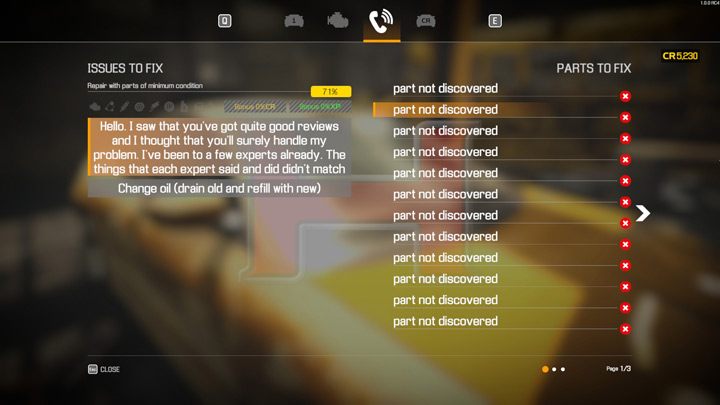
Examination Mode
The easiest way of examining the car is checking it visually in Examination Mode. Visual check-up can only uncover damages in specific parts: suspension, exhaust and engine.

Pull up the pie menu while looking at the car and click the Examination Mode icon.
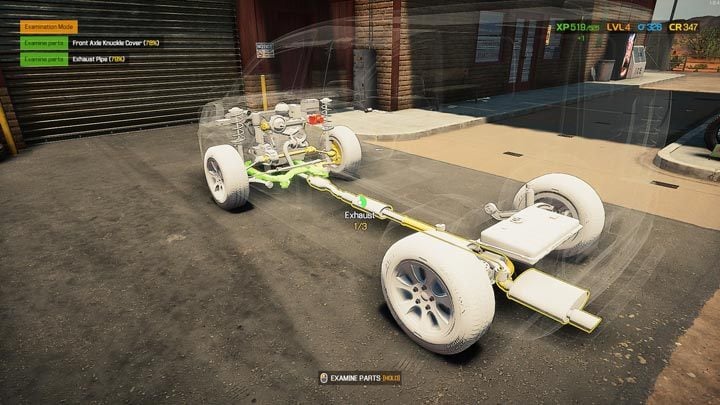
Hold down the interact button and wait for all of the group-specific parts to be examined. An examined part will change its color from white to green - if the part is still fully viable, yellow or orange if it's slightly worn out, or red if it requires immediate replacement.
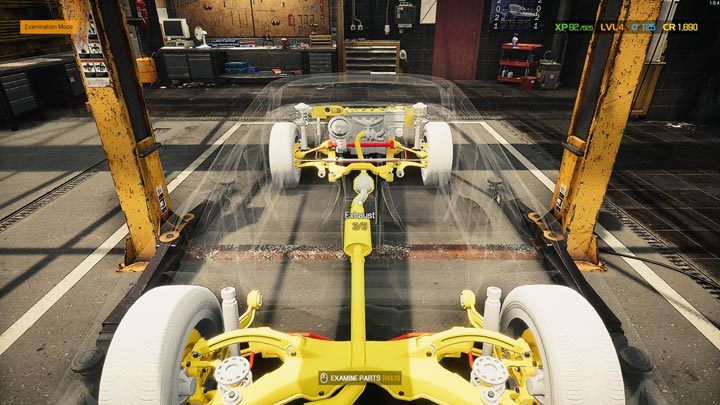
Examination Mode can be initiated whenever the player wants.

If you look inside the car while taking it apart, the damaged parts can be recognized thanks to the presence of rust.
Additional tools
Additional diagnostic tools can be unlocked in your garage by spending Credits.
Tools Purchase
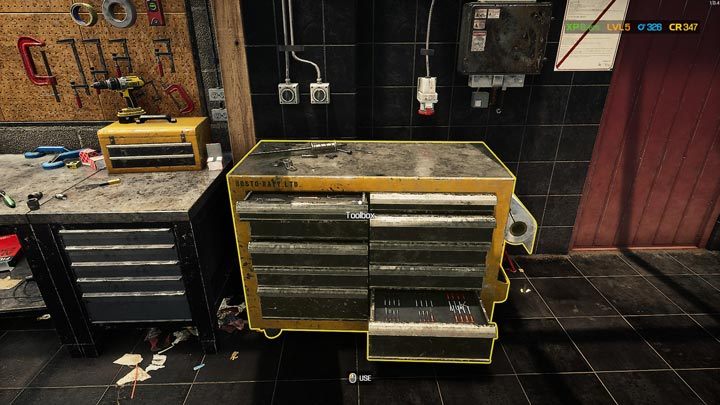
Click any of the tool cabinets in your garage. The garage has several of them with different shapes and sizes, but functionally they're all the same.
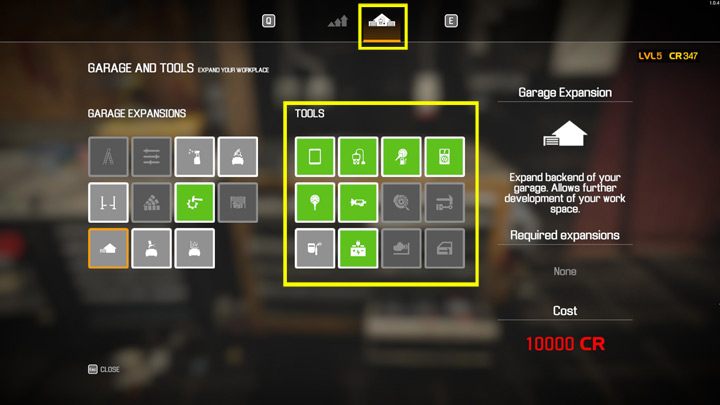
In the "Garage and Tools" tab you can unlock some useful tools that will help you discover malfunctions. Each tool costs a certain amount of Credits.
Using tools
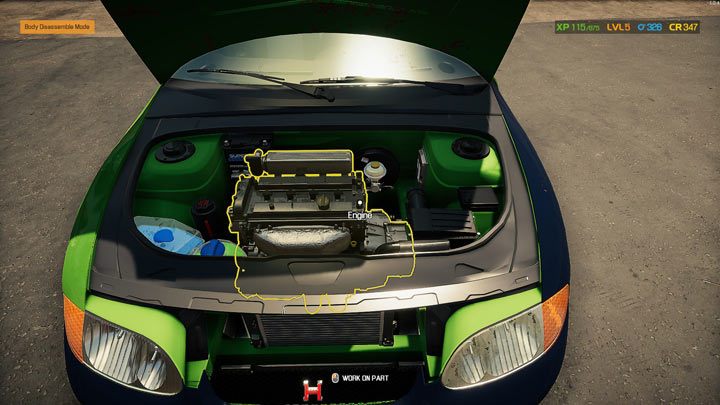
Click the engine to enter Disassembly Mode.
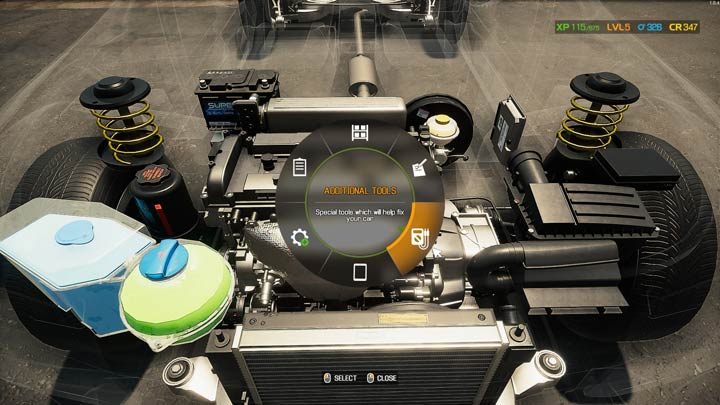
Select the Extra Tools option in the pie menu.
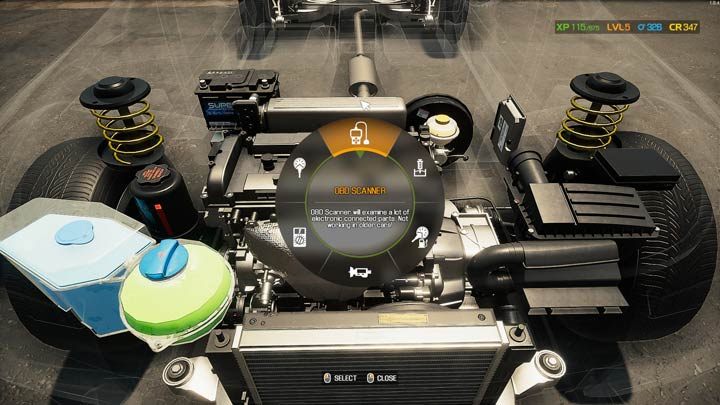
All of the extra diagnostics tools in the newly opened tab are described below.
OBD Scanner
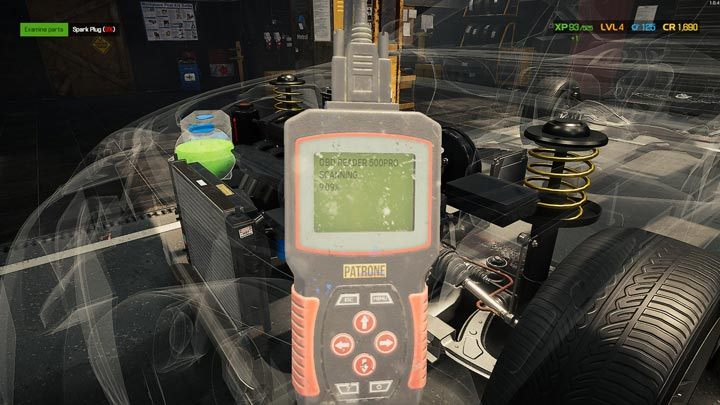
Cost: 1500 CR
The OBD Scanner is used to examine spark plugs, ignition coils, catalysts, ABS and ECU. The Scanner can only be connected if the car has a specific port supporting it, so it can be used only on more modern vehicles.
Compression Tester
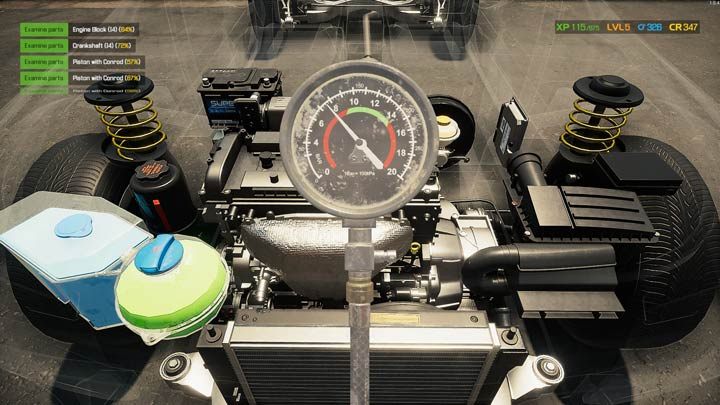
Cost: 300 CR
The Compression Tester examines the engine's interior: the crankshaft, pistons with conrods, the engine block and piston rings.
Electronic Multimeter
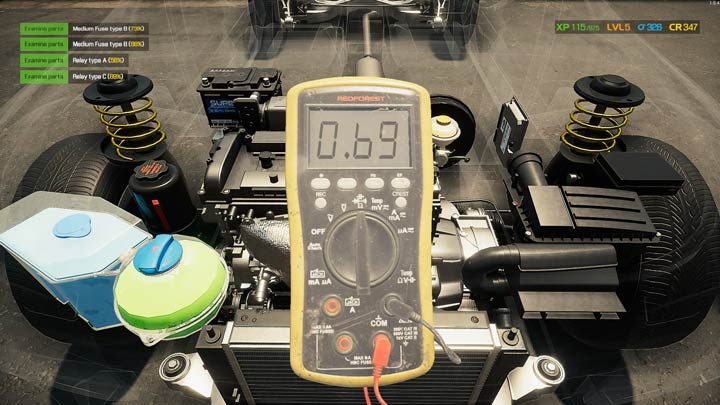
Cost: 150 CR
The Electronic Multimeter examines the car's electric parts, those being the battery, the alternator, the starter, the cooling fan, fuses and relays.
Tire Tread Tester
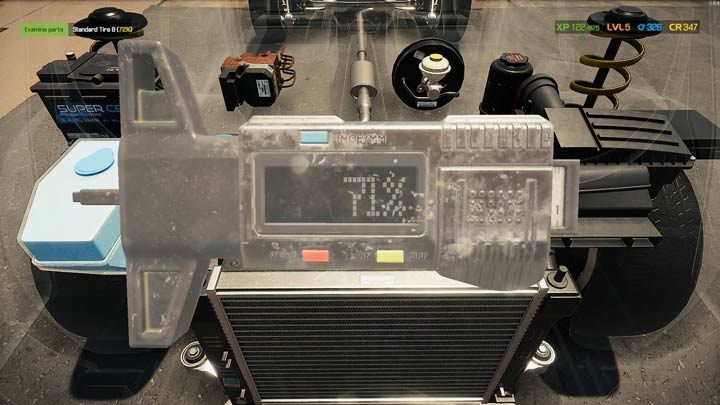
Cost: 150 CR
The Tire Tread Tester, as suggested by the name, examines the tire tread via tread depth.
Fuel Pressure Tester
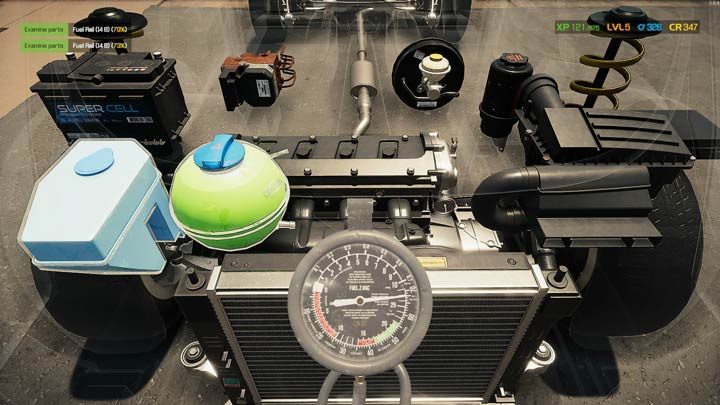
Cost: 300 CR
The Fuel Pressure Tester examines the fuel pump, fuel filter as well as the common rail.
Test Path
The Test Path is a vehicular inspection station where technical tests are carried out. Aside from adjusting the wheel and lights alignment, parts belonging to the braking system and suspension are also tested there. This includes small rubber bushings, which are difficult to find but often require replacement.
Unlocking the Test Path
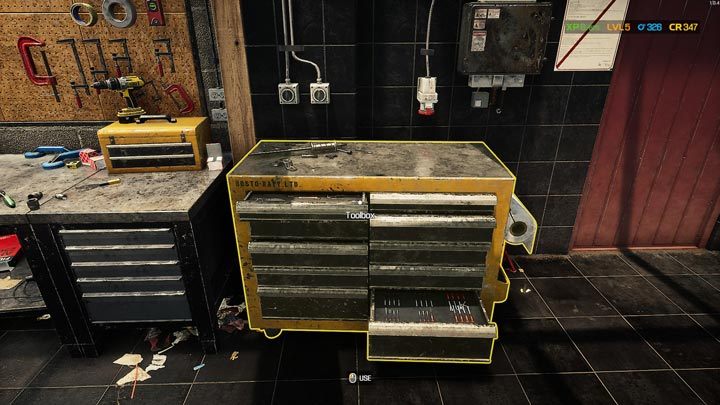
Click the toolbox in the garage.
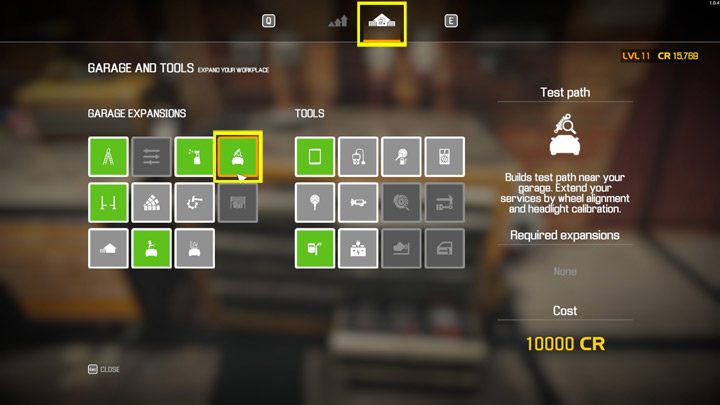
Cost: 10000 CR
Choose the Test Path option in the Garage Expansion menu.
Placing a car on the Test Path
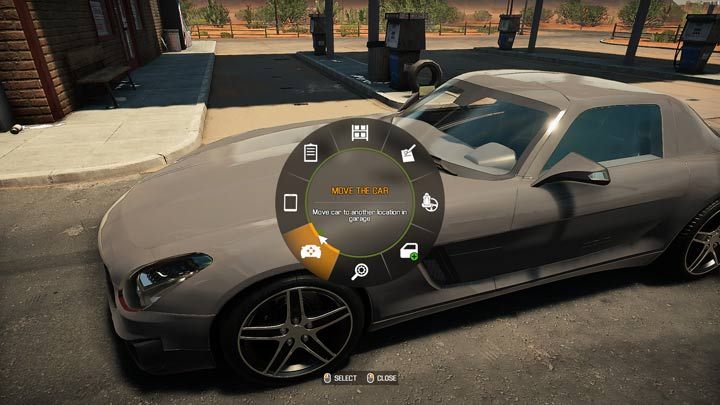
Select the Move Car option in the pie menu.

Choose Test Path from the available set of options.
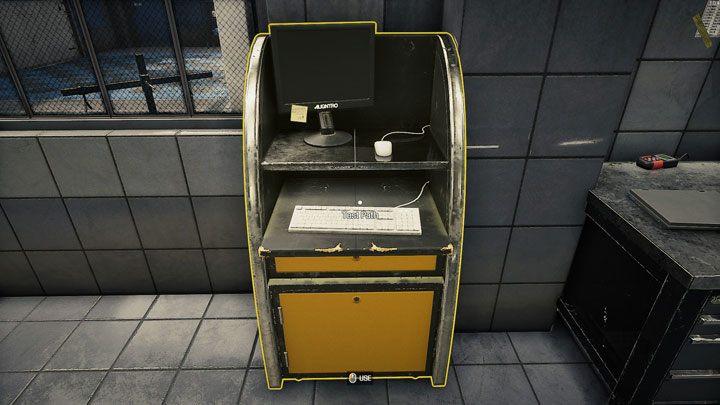
Once you're inside, interact with the computer standing by the wall to start the test.
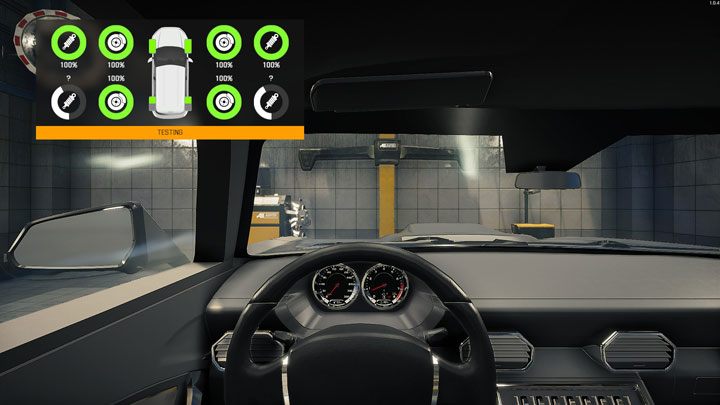
While testing the car, press the gas pedal or the brake pedal according to the pop-ups on your screen.
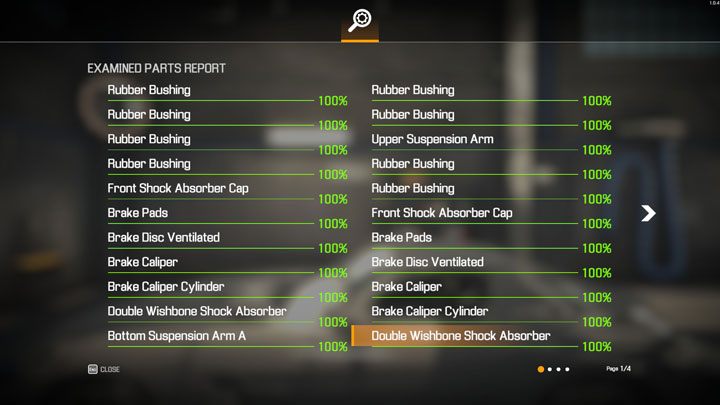
Once you're done, you'll obtain a detailed report about the condition of many parts at once.
- Car Mechanic Simulator 2021 Guide
- Car Mechanic Simulator 2021: Game Guide
- Car Mechanic Simulator 2021: Basics
- Car Mechanic Simulator 2021: Beginner's Guide
- Car Mechanic Simulator 2021: User Interface
- Car Mechanic Simulator 2021: Commission types
- Car Mechanic Simulator 2021: Malfunction Diagnostics
- Car Mechanic Simulator 2021: Replacing Parts
- Car Mechanic Simulator 2021: Garage Equipment
- Car Mechanic Simulator 2021: Skills
- Car Mechanic Simulator 2021: All cars - list
- Car Mechanic Simulator 2021: Basics
- Car Mechanic Simulator 2021: Game Guide
You are not permitted to copy any image, text or info from this page. This site is not associated with and/or endorsed by the developers and the publishers. All logos and images are copyrighted by their respective owners.
Copyright © 2000 - 2025 Webedia Polska SA for gamepressure.com, unofficial game guides, walkthroughs, secrets, game tips, maps & strategies for top games.
